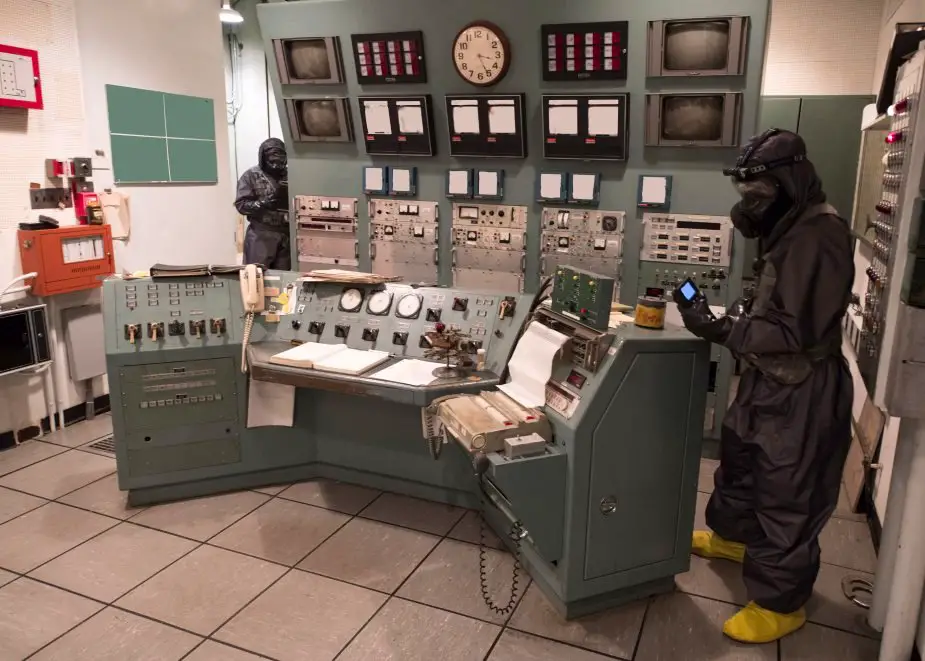Breaking news
US Army bolsters CBRNE capabilities with new Radiological Detection System.
To increase battlefield effectiveness and accuracy of current Chemical, Biological, Radiological, Nuclear and Explosives (CBRNE) detection capabilities, the US Army Joint Services are updating with a few pieces of new equipment at the Aberdeen Proving Ground.

Two Nuclear Disablement Team (NDT) members use the Radiological Detection System (RDS) and a Joint Personal Detector (JPD) to detect radiological contaminants during a site assessment mission (Photo Credit: Mr. Tad Browning, U.S. Army Operational Test Command Test and Documentation Team)
These updates include both a Radiological Detection System (RDS) and a Joint Personal Detector (JPD).
The RDS is a portable sensor used to identify and classify threats, while the JPD is a wrist-mounted device that monitors amounts of exposure to radiation.
Soldiers from the 20th CBRNE's Nuclear Disablement Team (NDT) participated in the operational test so the U.S. Army Operational Test Command (USAOTC), based at West Fort Hood, Texas, could collect data on both units to inform senior Army leaders on how effective, suitable and reliable RDS and JPD will be during real-world operations.
According to Lt. Col. David Morrow, team chief of the 20th CBRNE's NBT, the new equipment will enhance Soldier understanding of the Radiological and Nuclear (RN) environment through detection of RN threats, as well as a means to support assessing the vulnerability to RN hazards in general.
The Radiological Detection System (RDS) will replace DoD's legacy Radiation Detection and Computation (RADIAC) survey meters as well as U.S. Coast Guard, and other nations' legacy systems, explained Morrow.
He said the RDS will provide the Warfighter with the ability to detect a full spectrum of radiological hazards.
"The 20th CBRNE Command's Nuclear Disablement Team is happy to participate in the Operational Assessment of both the RDS and JPD," said Morrow. "Any time we can use radiation detection equipment in a tactical environment, it increases our training readiness.
"Additionally, we are able to give Soldier-level feedback to the Program Manager to make Army equipment more usable by Soldiers in field conditions."
USAOTC Test Officer Edward Jagodzinski said, "A unique opportunity presented itself to operationally test two separate radiological systems, on separate acquisition paths, in a combined test venue with a single test unit.
"Since operational testing is about Soldiers and unit missions, this combined test event was about making sure that the systems developed are effective in a Soldier's hands and suitable for the environments in which Soldiers and units train and fight."
Subject matter experts from several agencies were on hand to observe and evaluate the new equipment while it was employed by the test unit.
"The RDS system is a great concept," said 1st Lt. Mahmut Atabay, Nuclear Medical Science Officer with the Maneuver Center of Excellence from Fort Leonard Wood, Mo.
Atabay said RDS is designed to address joint service equipment interoperability challenges encountered during Global Responses like Operation Tomadaschi. Tomadaschi was a U.S. Military assistance operation from March 12 to May 4, 2011, to support Japan in disaster relief following the 2011 Tohoku earthquake and tsunami.
"A lesson learned from Tomadaschi was that radiation detection equipment and measurement processes were not standardized across the joint services," said Atabay.
"The RDS will standardize the radiation detection capabilities across all services and increase operational effectiveness of our force, during multiservice support of CBRN consequence management missions."


























